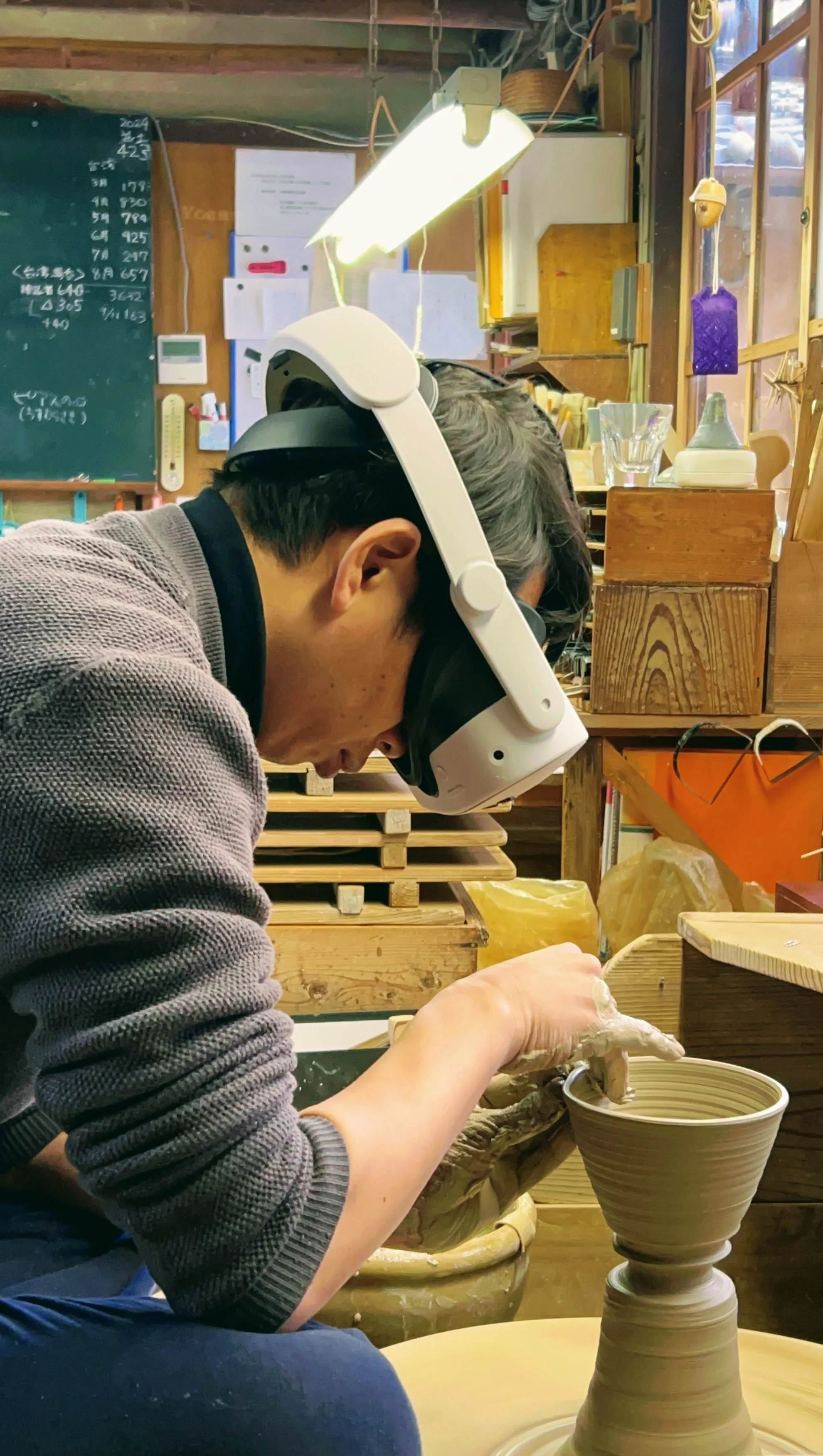Digitizing Tacit Knowledge | Hosai Matsubayashi XVI
Preserving 400 Years of Craftsmanship
The tacit knowledge of artisans—their senses, tactile experiences, movement skills, intuition, and unarticulated mental models (Nonaka et al., 1996, 2000a, b)—represents an invaluable legacy that written records and video documentation alone cannot fully capture. In a time when many traditional crafts are at risk of disappearing, preserving this knowledge has become more critical than ever.
“Neural networks are a means to encode the kind of intuitions we might have that can’t just be written out as an easy to follow recipe.”
Recognizing this urgency and and the potential of neural networks as a solution, we have embarked on a pilot project to digitize the tacit knowledge of Hosai Matsubayashi XVI. For over 400 years, his family has made pottery in Uji, Kyoto, under the name of Asahiyaki. Their long heritage makes Hosai-san the ideal candidate for our pilot, as it provides an opportunity to explore how his family has passed down tacit knowledge for 16 generations.
Hosai Matsubayashi XVI embodying his ancestors craftmanship to recreate their pottery bowls
Understanding Tacit Knowledge
Through the interview with Hosai Matsubayashi XVI, we have identified the key tacit knowledge of Asahiyaki’s pottery that have been successfully documented and passed down across multiple generations:
Clay Concentration: Clay deposited in the Uji River has been carefully excavated and aged for three generations before use, ensuring optimal workability and consistency.
Tools and Potter’s Wheel: Same sets of tools and potter’s wheel have been passed down across multiple generations. The transitioning from hand spun to electric powered wheel have also been documented.
Kiln Firing Temperature: The same kiln has been used for firing across generations, with detailed records of firing duration and temperature adjustments.
The meticulous documentation in key aspects of Asahiyaki’s craftsmanship across 400 years offered a rare opportunity for us to isolate a crucial variable that is nearly impossible to document: Phenomenal Body
Hadjimichael, Ribeiro, and Tsoukas (2024)
According to Hadjimichael, Ribeiro, and Tsoukas (2024) research on tacit knowledge, learners initially experience tasks as a series of unrelated particulars that require focal attention. However, through repeated engagement and guidance from skilled practitioners, they develop a “phenomenal body” capable of responding to situational demands with intuitive fluency.
The initial step of our pilot project aims to analyze the phenomenal body of Asahiyaki craftsmen using motion capture (mocap) technology and AI prediction model. AI prediction model such as the QuestSim AI enables us to leverage real-time hand mocap data to simulate a precise representation of their upper body movements.
Unlike written instructions, mocap system can more accurately capture the phenomenal body of craftsmen—bringing us closer to understanding their tacit knowledge
Understanding Artificial Neural Networks
According to John Maeda, VP of Design and Artificial Intelligence at Microsoft, the term “neural network” draws inspiration from the human brain’s architecture. “Neural” refers to the brain’s biological neurons, while “network” reflects the interconnected pathways through which those neurons communicate. However, unlike human logic, artificial neural networks process relationships in a purely numerical form. They pass raw data between synthetic neurons repeatedly, adjusting connections and weights until they learn to recognize patterns — a process akin to developing intuition through experience.
This learning process mirrors the way our bodies internalize tacit knowledge. Just as the “phenomenal body” develops muscle memory through repeated practice, neural networks refine their understanding through iteration. In both cases, mastery isn’t about memorizing a sequence of steps but responding fluidly and intuitively to situational demands after countless hours of repetition and adjustment.
Bridging the Past and Future
The ability to preserve and transfer tacit knowledge through technology marks a significant step forward in cultural preservation for future generations of craftsmen.
By digitizing more aspects of Asahiyaki’s craftsmanship—from the moment the clay is dug up to the spiritual ceremonies performed during the firing—we could, in theory, capture the full scope of its tacit knowledge.
Yet, in our pursuit of data, we might be missing the essence of craftsmanship. Perhaps it is less a science to be measured and more an art to be felt. If we were to embrace a more artistic approach, we might create something much more profound: Imagine simulating the phenomenal body of the first-generation Asahiyaki potter, Hosai I, and allowing Hosai XVI to shape clay alongside his ancestor in a seamless fusion of tradition and technology. What a poetic tribute that would be.
Access our growing collection of artworks, crafts, and exclusive products. Be invited to upcoming exhibitions, events, and artist collaborations (20% of your subscription goes directly into funding future artists' exhibitions)
Thank you to Professor Eugene K. Choi from Doshisha University for providing the research materials around tacit knowledge and Steven Harmon for providing the motion capture system.
We would like to extend our heartfelt gratitude to Hosai Matsubayashi XVI and to the generations of craftsmen of Asahiyaki.
For more information, visit Asahiyaki's website.



